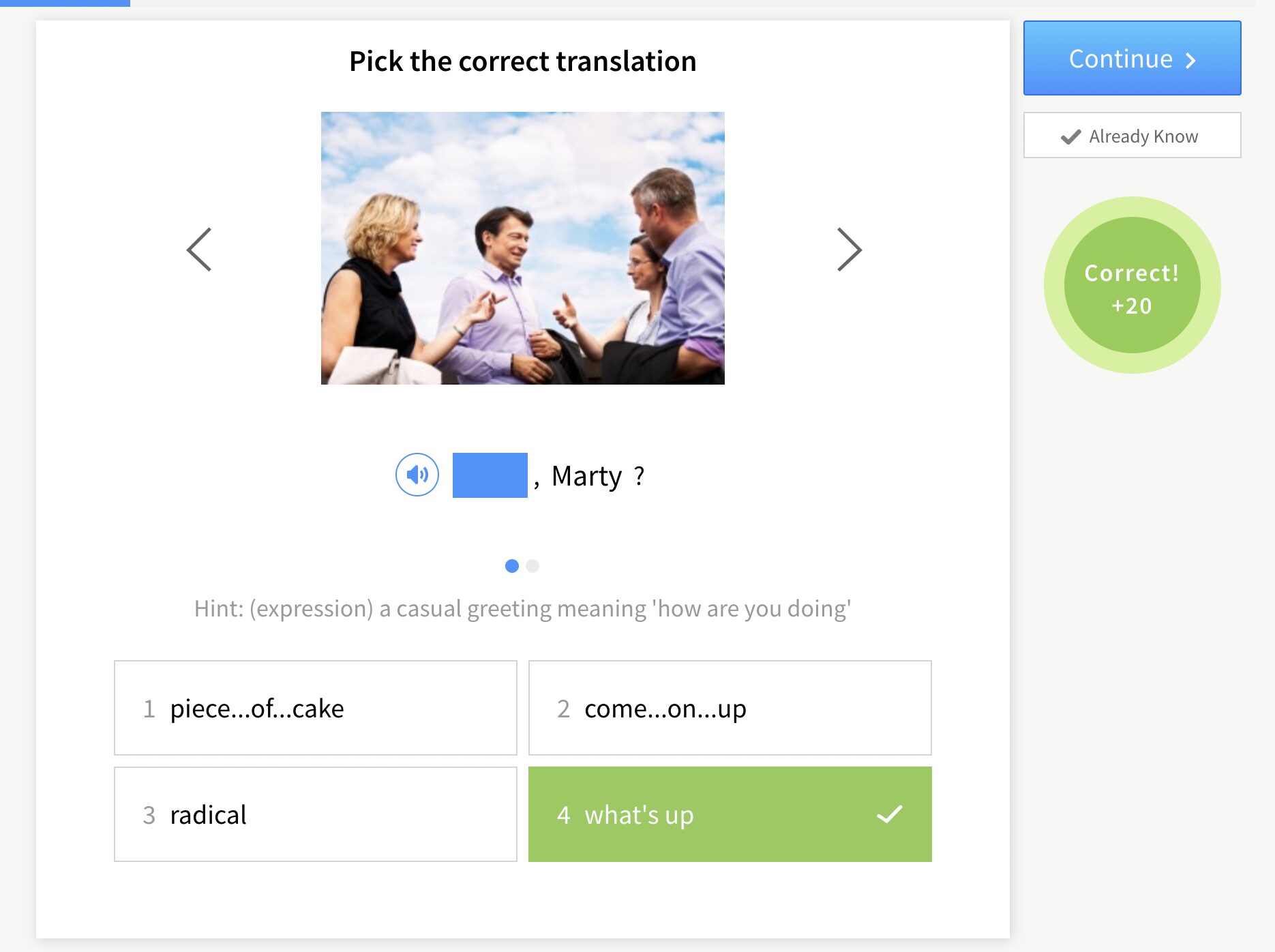Contents
- 1. Be Prepared
- 2. Don’t Let “Perfect” Be the Enemy of “Good”
- 3. Balance Corrections with Praise
- 4. Get into a Relaxed State
- 5. Don’t Always Correct in the Moment
- 6. Refer Back to Something Students Already Know
- 7. Sometimes You Need to Focus on the End Goal
- 8. Remember to Listen to Students’ Feedback, Too
- 5 Ways to Provide Feedback Besides Grades
- And One More Thing…
Giving Feedback to ESL Students: 13 Tips

Giving quality feedback to ESL students is important. The feedback you give contributes to creating a positive classroom environment, setting attainable improvement goals and accelerating learning.
But not all feedback is created equal, and not all students respond to a given type of feedback the same way. Generally, helpful feedback needs to be actionable, specific and practical, taking into consideration various learning needs.
Here are 13 ideas to help you give constructive feedback to all your ESL students.
Download: This blog post is available as a convenient and portable PDF that you can take anywhere. Click here to get a copy. (Download)
1. Be Prepared
Prior to delivering evaluations of student work—or even before a particular activity or assignment begins—it is important to create an environment that will foster quality feedback.
Ahead of time, it is a good idea to set clear goals. Before students begin work, make sure you have explained what the learning goals are and what a successful outcome should look like.
It is a good idea to also indicate what skills or methods students can use. Showing students how they can be successful gives them the framework to execute the skill set without being weighed down by ambiguity.
To further provide a clear framework for success, you can set explicit standards by creating a rubric. A rubric is useful because it distinguishes between different levels of work, further helping to clarify what you are looking for and also showing what you are not looking for.
2. Don’t Let “Perfect” Be the Enemy of “Good”
We live in a society with a perfectionism problem.
This can be a major roadblock if you’re a teacher trying to give feedback to a student who has internalized the perfectionist ideal.
Sometimes it even leads you to believe that intermediate students are at a lower level than they actually are, because they don’t show their true skills. They might be so afraid of making a mistake that they don’t say anything at all.
What your perfectionist language learners don’t realize is that while striving to be the best you can is a great personality trait, mistakes are part of the path to progress, and nothing to be ashamed of.
You can encourage a growth mindset instead of a perfectionist mindset by providing feedback that rewards participation, trying new things, and putting in the effort to practice. Strategic corrections are important, but give your students permission to be at 80% instead of 100% so they’re free to make mistakes without fear.
Besides improving at languages or a new skill, giving up perfection can actually make people more holistically happy, as well.
3. Balance Corrections with Praise
“The teacher is always criticizing me.”
“I don’t understand this, but I also don’t want to look stupid by asking.”
“What if I say something wrong and the others laugh at me?”
These are some students’ worries when they’re in a group setting or even in a private class.
However, if you balance corrections with praise, your students won’t automatically associate your comments with failure. In fact, a combination of positive and negative feedback can facilitate better learning.
When giving positive feedback you can say, for example:
“You used the third conditional perfectly there. You can always use it that way when talking about regrets.”
“You pronounced the ‘t’ like a native speaker—great job! Keep pronouncing it like that.”
Make sure to provide details, ensuring that students know exactly what they did right. Obviously, you still need to correct errors. But try to do it in a relaxed way, so as to create an atmosphere where making mistakes is no big deal and simply part of the learning process.
When it comes to correcting errors, you’ll have to get a feel for what works best in your particular setting. Generally, it helps to highlight one or two things a student is doing correctly, before constructively pointing out their mistakes and how to fix them.
4. Get into a Relaxed State
Even before you give feedback, you need to create a positive, welcoming environment for your students to receive it.
People in general, not only language learners, are more receptive to being evaluated when they’re calm. You definitely want to avoid any unnecessary stress in the classroom. Being relaxed can facilitate the absorption of information, but stress can block it. Excess levels of cortisol (the stress hormone) have even been shown to block the retrieval of memories.
Some short-term stress is okay. When taking tests, for example, most students will feel at least a little stress, which can be a motivating factor that pushes them to the next level. But you should still make sure that the daily classroom environment is laid back.
Some ways you can do that are by encouraging bonds and teamwork between students. Periodically change things up by playing fun games or kicking back and watching a movie, all while incorporating learning activities and exercises, of course.
5. Don’t Always Correct in the Moment
Another way to make students feel a little more at ease is to just let them speak, without the immediate need for feedback.
Of course, everyone has different learning styles. There are people who get nervous if you don’t correct them right in the moment or almost immediately afterward. However, if you’re correcting your students every third or fourth word, they’re bound to get discouraged and eventually might not even want to participate.
I remember that in one of my advanced Spanish classes, the teacher used a technique I liked: She called on various people in the class to contribute to the conversation. After the discussion ended, she corrected general mistakes but didn’t refer to the person in particular who made them. That way, everyone felt safer speaking.
You don’t have to use that specific method, but it’s good to reflect on the timing of your feedback and brainstorm about how to create a welcoming space for everyone to participate. If you have private students, you can ask them directly which method they prefer.
6. Refer Back to Something Students Already Know
There are ESL purists who think that all classes should be an English-only zone, with total immersion. But let’s get real here. Whether you’re learning math or Chinese, it can feel comforting to link new information with something you absorbed in the past.
If you’re not one of those purists, then you might want to throw in words or concepts in the students’ native language as a reference.
For example, when teaching pronunciation for the phrase “Nice to meet you,” I mention that “meet you” sounds like “michu,” which is almost how you say michi (kitty) in Argentine Spanish.
Or when I’m teaching vocabulary and defining a new word, I try to use the synonym that’s closest to the equivalent word in Spanish, so my students can understand it more quickly. For example, when defining the word “careful,” I would say it’s similar to “prudent,” which sounds like prudente in Spanish.
And when teaching grammar, I highlight the similarity or difference between English and the students’ native language. For example, in English, we use the verb “to be” to talk about one’s age, but in some Romance languages like Spanish or Portuguese, they use the verb “to have” instead. Making these pathways and connections helps.
Furthermore, if you have advanced students, you should also refer back to English concepts and vocabulary they already know because that will be a point of reference for them. Or if you have non-advanced students, you can still build on everyone’s vocabulary by teaching and using “international” English words that are already recognized by many beginners throughout the world.
7. Sometimes You Need to Focus on the End Goal
Sometimes it’s good to be a stickler for proper grammar and correct pronunciation—there’s a time and place for everything, after all.
However, we should also remember that language, especially basic language, is normally used to meet a goal: You need food, you want to rent a car or you need a recommendation for a good coffee place, to give just a few examples.
In some cases, your students will even already have a quite concrete purpose for why they’re learning English.
So remember to focus on the appealing objective, whether that’s a piece of cake (literally) or making new friends. If your feedback isn’t always about the nitpicky structural details, but rather about how to best get what you need or want, your students’ ears may perk up a little more. After all, they’re only humans who need to be loved (and who want some yummy comestibles) just like everybody else does.
8. Remember to Listen to Students’ Feedback, Too
You could be the best teacher in the world, but if you don’t listen to how your particular students learn best, your excellent techniques might end up being worth nothing. You might even need to consider totally restructuring your lesson, depending on the particular dynamic of your language learners.
Whether you teach big groups or have private students, it’s important to check in periodically to see if there’s anything you should change or add to the classroom dynamic. You can do this through written surveys if you have a big group, by taking part in class to have a check-in chat if it’s a smaller group or by directly asking a private student. Use your intuition.
5 Ways to Provide Feedback Besides Grades
Grades are an important tool for communicating a student’s performance level, but the best feedback is more than just a letter on the page. It’s detailed, timely and practical. Even better, it’s easy to give.
Here are five strategies for giving feedback to your ESL students which fit those characteristics.
Use Sticky Notes in Class
Believe it or not, a simple set of Post-its can simplify and streamline your grading life. This is especially true for class participation grades or speaking assignments your students do with their classmates.
As you observe peer-to-peer activities from your desk or while walking around the room, write any strengths or weaknesses you see on a sticky note. Be specific, write the name of the student you observed and, if possible, note the context of your observation.
At the end of your school day, take a look back at your sticky notes and transfer your observations into your grading records. But don’t just toss the paper when you’re done. It takes only a second to match and attach those sticky notes to your students’ desks.
If you make a habit of Post-it-sized observations while you teach, your students might get several bits of feedback per week that you wouldn’t otherwise have time to give them. Try focusing on three to five students each day rather than trying to make a note for every student, so you note something about everyone at least once a week.
And be sure that you write both positive things (Great use of this week’s vocabulary during the discussion today!) and areas students could use some work. (Looks like you would benefit from a review of the passive voice. Stop by after school if you want to go over it together.)
Streamline Progress Reports with Email
If you aren’t using email to give your students feedback on their English performance, you should be. Not only is it quick and free, but it’s also one of today’s primary means of communication. And it’s a great way to give your students progress reports without having to take a ton of time with one-on-one conferences.
To set your students up for email feedback, take time one day early in the semester to help them set up free email accounts through Gmail or another free email service. Send out a group email and ask each student to reply to you individually to make sure their account is set up correctly.
At the midpoint of the semester, send out an email requesting a self-evaluation from each student. This doesn’t have to be complicated. Simply ask the following questions:
- How do you think you are doing in class?
- In your opinion, what are your two greatest strengths in class?
- What is one area you want to improve?
- Do you have any questions for me?
Announce in class that you sent out an email, and give students a deadline for completing their responses.
After you receive a response from a student, reply with your thoughts on their performance. Try to keep a ratio of two positive things to one area to improve. Include specific grades if possible, and note any work they are missing. Be sure to answer any questions your student sent in their email to you, too.
Ask students to respond to your progress report so you know they received it, and to include any questions they might have and whether they want to follow up with an in-person conference.
Email is great for students because it has such real-world practicality. They learn the cultural norms of email while using it for practical purposes. Also, students generally have an easier time communicating through writing than speaking, so it can make asking questions less daunting.
Use Rubrics with Essays
Rubrics are a great way to assess less quantifiable subjects such as speaking and writing. I have found that using rubrics to give feedback on essays is one of the most effective ways to show my students why they are receiving the grades I am giving them.
Rubrics may seem a bit intimidating if you have never used one before, but they are really just a simple list of skills and performance levels. Here’s a great resource on how to set up a rubric.
When students turn in a writing assignment, make a copy of your rubric for each student. Keep it next to you as you read through each essay. Make observations both on the essay and on the rubric itself.
In the essay, you might circle specific grammar errors or circle and note any great choices in vocabulary.
On the rubric, circle the appropriate level of performance in each category. You can also copy specific examples next to your circles to show your student why you chose that performance level, then put a final grade at the bottom of the page. Staple the rubric to the back of your student’s essay.
When you hand back your students’ papers, they will see specific examples of what they did right and wrong, and they will see a direct connection between their writing and the grade they received.
If possible, use the same rubric for subsequent essays so students know how you will grade them and in what areas they need the most improvement.
Let Students Hear Themselves with Smart Videos
The age of smartphones is great for teaching. Though texting in class is a no-no, you can use your students’ phones to give feedback on pronunciation and other speaking and presentation skills. They are also great for giving students feedback on fluency and the use of body language.
Before using what I like to call “smart videos” for feedback in class, you’ll have to check that everyone has a smartphone. If not, you can still give feedback this way, you’ll just have to use your own phone.
Before your next student presentation, ask each student if you can use their phone (or your own) to record their presentation. After the presentations, ask your students to watch their videos and score themselves on a scale of one to four with the following designations:
- 4 – performed with fluency and accuracy
- 3 – performed well
- 2 – needs some improvement
- 1 – did not perform well or was confusing
Give your students some categories to score themselves in, such as pronunciation, fluency, use of vocabulary, body language and overall presence.
If you recorded your students using your phone, either email the files to your students or download all the videos to a classroom computer and let students access them during free learning periods.
Do your own assessment during the live presentation. Have students turn in their self-assessment and compare it to your assessment. Then have a one-on-one conference with your students to share what you observed and talk about any areas in which you and your student differed in scores by more than one point.
Soften Your Feedback with Indirect Monitoring
Even constructive criticism can seem like an attack if a student is in the wrong frame of mind to hear it. Sometimes, no matter how well you phrase your feedback, they may take it personally.
That’s one of the advantages of indirect monitoring. It’s traditionally used for assessing student speaking performance, but you can use it in any area of language learning.
When assessing students speaking this way, you make your way around the classroom as students are talking with one another. Instead of being obvious about who you are listening to and assessing, you listen in on the sly. Pretend you’re doing something else, or make it look like you’re listening to a different student than you really are. As you do, make notes for yourself on common mistakes your students are making.
After the activity is done, give a general instructional lesson that addresses the errors you heard from more than one student. You can use the actual mistakes you heard but don’t point out specific students.
When you give feedback this way, it’s not personal. It’s business. No one will feel attacked, because you didn’t address their errors directly to them.
You can also use this strategy for feedback on writing or grammar. Rather than marking specific errors on your students’ papers, cap your red pen and give a lesson on the topic instead. That might be all your students need to rectify an error that has become a habit.
Good luck on your journey as you constantly fine-tune and evolve your teaching techniques.
Since you were quite possibly a language student yourself earlier in life, remember what it was like for you and how you liked to be taught, as well as any challenges you might have had with teacher feedback.
Also, remember the feedback techniques in this article when you’re feeling stuck and unsure how to encourage your students’ progress.
And One More Thing…
If you’re like me and prefer learning English on your own time, from the comfort of your smart device, I’ve got something you’ll love.
With FluentU’s Chrome Extension, you can turn any YouTube or Netflix video with subtitles into an interactive language lesson. That means you can learn from real-world content, just as native English speakers actually speak.
You can even import your favorite YouTube videos into your FluentU account. If you’re not sure where to start, check out our curated library of videos that are handpicked for beginners and intermediate learners, as you can see here:
FluentU brings native English videos within reach. With interactive captions, you can hover over any word to see an image, definition, and pronunciation.
Just click on the word to see other example sentences and videos where the word is used in different contexts. Plus, you can add it to your flashcards! For example, if I tap on the word "viral," this is what pops up:
Want to make sure you really remember what you've learned? We’ve got you covered. Practice and reinforce the vocab from each video with learn mode. Swipe to see more examples of the word you’re learning, and play mini-games with our dynamic flashcards.
The best part? FluentU tracks everything you’re learning and uses that to create a personalized experience just for you. You’ll get extra practice with tricky words and even be reminded when it’s time to review—so nothing slips through the cracks.
Start using the FluentU website on your computer or tablet or, better yet, download our from the App Store or Google Play.
Click here to take advantage of our current sale! (Expires at the end of this month.)












